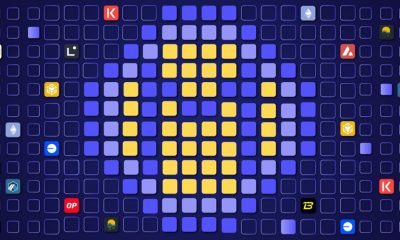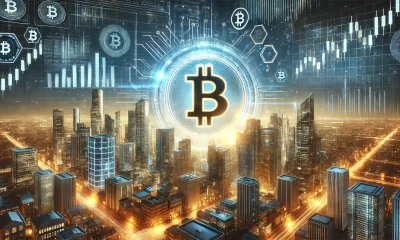Digital Assets
What is Web3?

The evolution of the web has been nothing short of remarkable. From its humble beginnings as a way to share research papers among scientists to its current status as a global communications platform, the web has come a long way in a relatively short period of time.
The web has continued to evolve over the years, and it is now used for a wide variety of purposes — it has simply become an essential part of our lives.
Web 3.0 is the next stage of evolution for the internet, based chiefly on core ideals of decentralization, openness, and increased utility for consumers. This next-generation Web is an executable phase of the Web, in which computers interpret information as humans do to produce personalized content for users.
But how is it accomplishing this? Let's take a deep dive to understand it all better!
Evolution of the Web
Over decades, the web has grown and gained new concepts, websites developed infinite possibilities, and users quickly started using entirely different infrastructures, even if they did not realize it. The Web has evolved dramatically over the years, and today's applications are virtually unrecognizable from their most primitive days. The web as it is now is truly amazing in a lot of ways, which started with just a simple idea.
Web1
In 1989, Tim Berners-Lee invented the first version of the World Wide Web. It was a system of linked documents that could be accessed via the internet. The documents were written in HTML markup and could be viewed in a web browser.
This Web was characterized by static HTML pages manually created and published by webmasters. Web 1.0 was focused on delivering information to users and did not have the interactivity or user-generated content we see today. While Web 1.0 was a significant breakthrough in terms of making information available online, it was limited in terms of what users could do with that information.
Web2
Web2 is the second generation of the World Wide Web, characterized by increased user interactivity and collaboration and more sophisticated web applications. Here, the emphasis was on dynamic and user-generated content. Web 2.0 is a reading-write phase of the internet, which allows interactivity between Web sites and Web users.
It has also led to the development of social media applications such as blogs, wikis, and social networking sites like Facebook, Instagram, YoutTube, TikTok, and WhatsApp. These applications allow users to share information and collaborate in new and innovative ways. Overall, Web2 has greatly expanded the potential of the World Wide Web and has made it into a much more interactive and user-friendly environment.
Web3
Web 3.0 is the next generation of the Web that enables developers to build and deploy decentralized applications (dApps) that are more secure and private. It is powered by a decentralized network of nodes that run permissionless and trustless protocols like Bitcoin and Ethereum. The nodes in the network are connected and work together to process transactions and maintain the ledger.
Web4
Web 4.0 is the result of the rapid development of internet technologies and is all about mobility and voice interaction between the user and robots. With constant access to robots, everyday life is increasingly dependent on machines.
Some key features of Web 4.0 will include a symbiotic interaction between man and machine — where the lines between the two are often blurred. Here, the internet will be able to communicate with users in a way that mimics human interaction, and information can be transmitted and accessed from anywhere in the world. It is marked by transparency and the active use of artificial intelligence in order to improve the quality of opportunities available online.
Web5
While the world is still wrapping its head around Web3, Jack Dorsey, the founder of Web2 platform Twitter, has skipped to what he calls Web5. Announced in June 2022 by the crypto and DeFi arm of Block (previously Square) TBD, the Web5 platform promises an “extra” decentralized web platform by combining Web2 and Web3.
Web5's core idea is to put you in charge of your data and identity — something that is very important in the decentralized world of Web3. There are three pillars that Web5 is built on: self-owned decentralized identifiers, verifiable credentials, and decentralized web nodes for storing data and relaying messages.
Web3: The Current Stage of Web
Currently, we are in the early adopter phase of Web3, which is built around technologies like artificial intelligence, machine learning, the Semantic Web, and trustless and decentralized systems like blockchains and peer-to-peer networks. It utilizes crypto assets (fungible vs. non-fungible) and the Metaverse to create a user-owned economy.
Web3 allows developers to build decentralized applications (dApps). These applications are not controlled by any central authority, meaning they are more secure and cannot be shut down by any single entity.
With the emphasis on decentralization, Web3 applications and services provide greater transparency, give users greater control of their content, and provide more personalized user experiences.
Web3 is still in its early stages with limitations in the form of scalability, security, and lack of interoperability. However, it does have the potential to revolutionize the way we use the internet. To put it succinctly, Web3 could make the internet more open and secure for everyone.
Capabilities of the Existing Web
As the first generation of the web, Web 1.0 was limited in terms of what users could do with it. However, it was still a revolutionary way to share information and laid the foundation for the more sophisticated web that we have today. Web 1.0 paved the way for subsequent generations of the web, which offer ever-increasing possibilities and capabilities for users.
Then came Web 2.0, which offered users a plethora of capabilities. With the advent of social media and the rise of user-generated content, users can now connect and share information like never before.
In the last 15-20 years, the flat internet pages of Web 1.0 have been entirely replaced with Web 2.0's interactivity and social connections. Web 2.0's dialogic nature enables interaction with each other and collaboration among themselves in a social network, such as the maker of user-generated content within the virtual community.
Driven by platforms like Facebook and Twitter, Web 2.0 also provides users with new ways to create and share all sorts of information, media, and applications, as well as access and use information. All of this has been made possible through blogs, wikis, RSS feeds, podcasts, web applications, and social networking sites.
It is pretty clear that the web has come a long way since its inception in the early 1990s, with the web today a far more interactive and dynamic place. Now, we are growing further with Web 3.0, which is blending older-generation web tools with cutting-edge technologies like artificial intelligence and blockchain to advance interconnectivity among users and increase Internet use further.
This new Web takes on a variety of forms, ranging from AI applications predicting future trends, DeFi protocols allowing people to trade, borrow, and lend digital assets without requiring intermediaries, and innovative web services with lucrative business models, to whole 3-dimensional virtual worlds enabling individuals to interact with one another.
Leading to Vast Possibilities & Untapped Potential
Sometimes referred to as the “semantic web,” Web 3.0 takes things to the next level. It is a more intelligent and interconnected version of the internet, where information is better organized and easier to access. With Web 3.0, we can shop, bank, and work online with greater ease and security. We will also be able to find the information we need more quickly and easily, thanks to improved search and organizational capabilities.
Web3 will offer powerful decentralized services which are more resistant to censorship and fraud, as there is no single point of failure. Advancing technologies like distributed ledgers and blockchain storage will also challenge Web 2.0's centralization, surveillance, and exploitative advertising. As a result, it will accelerate fair and transparent usage of users' data, ranging from personalized search results to cross-platform developer tools to 3D graphics.
With Web 3.0, the data generated from a variety of different and increasingly powerful computational resources, including cell phones, desktops, appliances, vehicles, and sensors, will be sold to users via decentralized data networks. This will ensure end-users can fully control and own their data and have cryptographic security in the next-generation web.
All interactions here will be transparent since users will have access to data processing and storage in the blockchain networks, leading to a more honest and secure browsing experience.
In addition, Web3 will allow websites and applications to leverage data more meaningfully and adapt the information for every user in order to deliver personalized experiences.
AI algorithms will give Web 3.0 websites the ability to adapt data to the preferences and likings of each user, eliminating issues like rating manipulation and providing users with better, more objective information. By using decentralization and artificial intelligence, computers in Web 3.0 will be able to analyze data just as humans can, thereby providing users with valuable content tailored to their particular needs.
Users can get better engagement from customer service agents using smart chatbots, who can speak with multiple consumers simultaneously. Its trustless nature means Web 3.0 will also allow the end-users to communicate directly without going through a trusted mediator. Web3 will put the property rights of platforms and applications into users' hands instead of the technology giants controlling platforms.
With Web 3.0, information will be increasingly interconnected and ubiquitous since, as we said earlier, internet-connected devices will no longer be limited to computers and smartphones alone. Web 3.0 applications are characterized by omnipresent connectivity thanks to broadband, 5G, and IoT, all of which contribute to information being accessible by various devices, not only PCs.
With mobile devices and Internet connectivity advancements, a Web 3.0 experience will be available anywhere, anytime. We will likely see Web 3.0 become fully established soon, particularly in the IoT industry. Most Web3 developments now leverage blockchain technology to solve several noteworthy problems associated with Web 2.0.
As for the potential for Web4 and Web5, it is vast and largely untapped. This new generation of the web will allow users to immerse themselves in web content in a way that was not possible before through the use of virtual reality and augmented reality. This will open up new possibilities for education, entertainment, and communication.
Ultimately, the upcoming phase of the Web has the potential to revolutionize the way we interact with the internet and provide users with a more enriching experience.
The Future of Web
The web, as we know it today, is a powerful tool for communication and commerce. But new technologies and ideas are starting to gain traction and be adopted by a wider audience. There is a lot of experimentation going on, and many new features are being developed. This is a time of rapid growth and change, as new ideas spread quickly and contribute to the overall evolution of the Web.
This next generation of web is being built on the foundations of decentralization and privacy. And while still in its early stages, it holds great promise for the future of the web. As Web 3.0 matures, we expect a more open, secure, and private web that empowers users.











